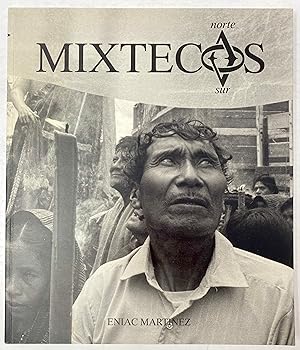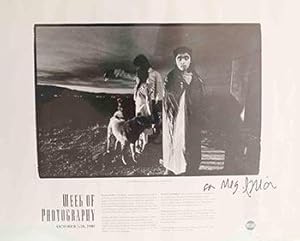eniac (8 Ergebnisse)
FeedbackSuchfilter
Produktart
- Alle Product Types
- Bücher (6)
- Magazine & Zeitschriften (Keine weiteren Ergebnisse entsprechen dieser Verfeinerung)
- Comics (Keine weiteren Ergebnisse entsprechen dieser Verfeinerung)
- Noten (Keine weiteren Ergebnisse entsprechen dieser Verfeinerung)
- Kunst, Grafik & Poster (Keine weiteren Ergebnisse entsprechen dieser Verfeinerung)
- Fotografien (Keine weiteren Ergebnisse entsprechen dieser Verfeinerung)
- Karten (Keine weiteren Ergebnisse entsprechen dieser Verfeinerung)
- Manuskripte & Papierantiquitäten (2)
Zustand Mehr dazu
- Neu (Keine weiteren Ergebnisse entsprechen dieser Verfeinerung)
- Wie Neu, Sehr Gut oder Gut Bis Sehr Gut (2)
- Gut oder Befriedigend (5)
- Ausreichend oder Schlecht (Keine weiteren Ergebnisse entsprechen dieser Verfeinerung)
- Wie beschrieben (1)
Einband
Weitere Eigenschaften
- Erstausgabe (3)
- Signiert (3)
- Schutzumschlag (Keine weiteren Ergebnisse entsprechen dieser Verfeinerung)
- Angebotsfoto (5)
- Keine Print-on-Demand Angebote (8)
Sprache (4)
Gratisversand
- Kostenloser Versand nach Deutschland (Keine weiteren Ergebnisse entsprechen dieser Verfeinerung)
Land des Verkäufers
Verkäuferbewertung
-
EUR 1,99
Währung umrechnenEUR 4,00 für den Versand innerhalb von/der DeutschlandAnzahl: 1 verfügbar
In den WarenkorbaudioCD. Zustand: Wie neu. Sprache: Deutsch Gewicht in Gramm: 469.
-
EUR 84,45
Währung umrechnenEUR 34,48 für den Versand von USA nach DeutschlandAnzahl: 1 verfügbar
In den WarenkorbHard Cover. Zustand: Very Good. First Edition; First Printing. Text in English and Spanish. Numerous full page panoramic photographs. ; Tight, clean and crisp. A touch of shelf/edge wear to boards, otherwise better than Very Good. Interior is in excellent condition. No inscriptions. No remainder mark. Not ex-library. ; 157 pages.
-
EUR 85,96
Währung umrechnenEUR 64,73 für den Versand von USA nach DeutschlandAnzahl: 1 verfügbar
In den Warenkorbunknown_binding. Zustand: Good. Hardcover book no dust jacket. Light wear to book cover and book edges.
-
EUR 97,78
Währung umrechnenEUR 32,32 für den Versand von USA nach DeutschlandAnzahl: 1 verfügbar
In den WarenkorbSoftcover. Zustand: Very Good. First Edition. Text in Spanish. In Very Good+ condition. For most of its history, a significant percentage of United Stated citizen shave viewed their border with Mexico as a no-man's land worthy of attention only as the entry site of illegal inmigrants and problems. In the last decade segments of the U. S. citizenry have become more vocal against the presence of immigrants in their country, while the Mexican presence throughout the United States -legal or illegal- intensifies. These photographs are part of a project called Mixtecos: Norte / Sur and one of it's goals is to create a better understanding towards the people who are crossing the border, an opportunity for a Mexican Photographer to share with a United States audience a vision of the Mixteco migration. It is the saga of indigenous people forced by economic circumstamces to move from their impoverished homeland of Oaxaca to the industrialized countryside of the southern United States. Eniac Martínez was one of Mexico's pre-eminent Mexican documentary photographers. His awards included Second place in the VIII Anthropological Photography Contest. Prize in the V Photography Biennial of the National Institute of Fine Arts, Mexico. Scholarship for the Golden Light Awards of the Maine Photographic Workshops in the United States. Fulbright Scholarship, first prize in the First Annual Award from the Mother Jones International Foundation for Documentary Photography. Scholarship for Young Creators awarded by the National Fund for Culture and the Arts. Co-investment Grant awarded by the National Fund for Culture and the Arts. He was a member of the National System of Art Creators since 2000.
-
EUR 266,67
Währung umrechnenEUR 22,44 für den Versand von USA nach DeutschlandAnzahl: 1 verfügbar
In den WarenkorbSoft cover. Zustand: Fine. 1st Edition. [in Spanish] First edition, scarce title. Inscribed and signed by Eniac Martinezon front free endpaper, see photo. Softcover wraps and interior pages in fine condition, minimal wear, tight and square binding, crisp pages, like new. Inscribed by Author.
-
Halloween in Gilroy,California, 1986. (Signed)
Verlag: San Francisco: Mother Jones International fund for Documentary Photography, 1990
Anbieter: Wittenborn Art Books, San Francisco, CA, USA
Manuskript / Papierantiquität Signiert
EUR 155,56
Währung umrechnenEUR 15,53 für den Versand von USA nach DeutschlandAnzahl: 2 verfügbar
In den WarenkorbZustand: Good. 17 x 22 inches. Poster for the Week of Photograpy , Oct. 1-10, 1990. Signed and dedicated.
-
Eniac Martinez, The Mother Jones International Fund for Docmentary Photography.
Verlag: Eniac Martinez., 1990
Anbieter: Wittenborn Art Books, San Francisco, CA, USA
Manuskript / Papierantiquität Signiert
EUR 266,67
Währung umrechnenEUR 15,53 für den Versand von USA nach DeutschlandAnzahl: 1 verfügbar
In den WarenkorbZustand: Good. 22 x 17 inches. Rolled, black-and-white poster. Near Fine. Poster features a print of Eniac Martinez' ?Halloween in Gilroy, California, 1986.? Signed copy.
-
Collection of ENIAC artifacts once owned by Winifred S. Jonas, one of the ENIAC's first programmers
Erscheinungsdatum: 1951
Anbieter: Jeremy Norman's historyofscience, Novato, CA, USA
EUR 11.111,22
Währung umrechnenEUR 38,84 für den Versand von USA nach DeutschlandAnzahl: 1 verfügbar
In den Warenkorb[ENIAC.] Collection of artifacts: (1) The ENIAC Electronic Numeral Integrator And Computor [sic] developed, designed and constructed by the Moore School of Electrical Engineering of the University of Pennsylvania 1944. Engraved name plate on black-painted metal (probably aluminum). 120 x 210 mm. A few minor scratches. (2) "ENIAC Engineer" desk sign. Black and white plastic plaque on wooden base. 50 x 210 mm. Light wear, corners chipped. (3) ENIAC Section bank deposit book, issued by the First National Bank, Aberdeen, MD. 120 x 174 mm. Beige cloth covers, front cover with inked account information: "ENIAC Section, Winifred Jonas, Treas., c/o BRL, A.P.G. Ind." (4) 3 ENIAC input/output punch cards. 83 x 187 mm. each, one with punched holes. A few stains, mathematical calculations in ballpoint on the verso of one card. All 3 cards have ENIAC printed in small letters in their lower left margin. (5) [Mayer, Maria Goeppert (1906-72).] Painted tin cigar box, Du Maurier brand, carried by Mayer during her visit to the ENIAC in 1949, with laminated note inside providing details. 85 x 75 x 22 mm. Heavy wear, dents, paint scuffed. Fascinating and unique collection of ENIAC artifacts once owned by Winifred S. Jonas (1925-2021), a mathematician and "human computer" at the Aberdeen Proving Ground who was one of the ENIAC's first programmers. We have never seen any comparable collections of ENIAC memorabilia on the market. The ENIAC, designed and constructed at the University of Pennsylvania's Moore School of Engineering, was the world's first programmable electronic general-purpose computer; it went on line in December 1945 and remained in continuous operation until 1955. In 1947 the ENIAC was moved from the Moore School to the U.S. Army's Aberdeen Proving Ground, where it was used primarily to calculate artillery firing tables. Four years later President Harry S. Truman viewed the ENIAC during his 17 February 1951 visit to the APG; no. (1) is an unused name plate created for the occasion. The collection also includes an "ENIAC Engineer" desk sign (no. [2]), three ENIAC punch cards used for data input / output (no. [3]), a bank book for the APG's ENIAC section recording a single deposit of $31 (no. [4]), and a cigar tin carried by Nobel Laureate Maria Goeppert Mayer when she visited the APG in 1949 (no. [5]). Inside the tin is a laminated note reading: "This small cigar box contained very smelly small cigarsthat were smoked by Dr. Maria Mayer 1949 in the outer ENIAC room (which contained the IBM printer & reader for reading data to be used in ENIAC computations.) Dr. Mayer, a Nobel prize winner in physics, gave the box to Winifred Smith (Jonas) who was a mathematicianoperating hydrogen bomb research program brought from Los Alamos, N. Mex., U. of Chicago and Rand Institute, California." .









